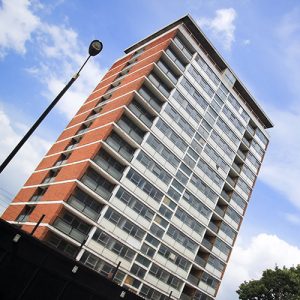The most appropriate way to ensure a reinstatement value is correct is to commission a regulated surveyor to carry out a professional valuation at least every three to five years.
An accurate and professional property valuation is vital to ensure the building would be fully covered for the costs of REINSTATEMENT should a claim be necessary.
One of the most common discrepancies in insurance valuations is between the market value of the property and the reinstatement cost. Even in today’s economic climate, the market value of a property, whilst usually more, may be less than it would cost to rebuild, and that is an important consideration.
Also, there are several variables which can impact on the value of a property over a period of time, such as extensions or refurbishment and the insurance valuation should be revisited regularly accordingly.
What is a reinstatement value?
The cost of rebuilding the property, including garages, parking areas, boundary walls, fences etc in the event of a total loss.
To include:
- External works, drainage, water supply, electricity supply, gas supply and the like.
- Demolition and site clearance costs.
- Any shoring and waterproofing required to surrounding land or buildings.
- Professional and architect fees associated with the reinstatement work.
Under insuring your building can have expensive consequences, including inequitable insurance premiums and inadequate cover, meaning the AVERAGE clause could be enforced and your claim not being settled in full.
What is the average clause?
Put simply, the principle of average means if the property was not insured to its full re-instatement value at the time of loss, the amount of the claim payment will be reduced proportionately.
Who is responsible?
The onus falls on the Directors of Right to Manage Companies, Residents / Tenants Associations and Freehold Companies, or in some cases the managing agent, to provide their insurer with a correct reinstatement value.
Day One Reinstatement
 Often on a block of flats policy there are two amounts shown:
Often on a block of flats policy there are two amounts shown:
- Building Declared Value – the reinstatement value at the inception (day one) of the policy and the figure upon which the underwriter will base their premium calculation
- Building Sum Insured – an uplifted figure afforded by the insurer and calculated by applying a percentage increase (usually 15% – 50%) to the Building Declared Value. This takes into account increases in construction costs and inflation during the period of the design, planning tendering and rebuilding of the property.
Again, it is important to note; the Building Sum Insured is not there as a provision or ‘fail safe’ for an incorrect reinstatement value and the subsequent potential effects of under insurance – the Building Declared Value is the overriding factor in any decision taken by the insurer, as to whether a claim is settled in full…or not.
Finch Group offer bespoke insurance options for a wide range of commercial properties. See below for details.





